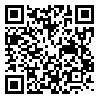BibTeX | RIS | EndNote | Medlars | ProCite | Reference Manager | RefWorks
Send citation to:
URL: http://ijpcp.iums.ac.ir/article-1-1628-en.html
2- Tehran, Iran, I.R.
Objectives: delusional disorder is not a common psychotic disorder, often characterized by single and systematic delusion. The present study was designed to examine delusional disorder in terms of epidemiology, symptomatology and, phenomenology. Method: the subjects were 51 patients (34 male, 17 female, 45 hospitalized, and 6 out patients), who were diagnosed as suffering from delusional disorder on the basis of DSM-IV diagnostic criteria. They were studied for a period of two years at Rooxbeh hospital. The data was collected through a 49 item questionnaire, a Wechsler IQ test, and CT scans. Findings: the most prevalent delusions were found to be persecutory and jealously delusions (49.2% and 40.7% respectively). The average age for the onset of the disorder was about forty one. 20% of the patients were from low socio-economic conditions. In 45% of the cases, severe mental stress was noticed in the background. Traces of mental disorder in the family history, organic disease, and substance abuse were estimated to be 30 %. Results: the pattern of delusional disorder in this study seems not to be much different from that of similar studies.
.
Received: 2012/11/20 | Accepted: 2013/07/17 | Published: 2013/07/17
| Rights and permissions | |
 |
This work is licensed under a Creative Commons Attribution-NonCommercial 4.0 International License. |



